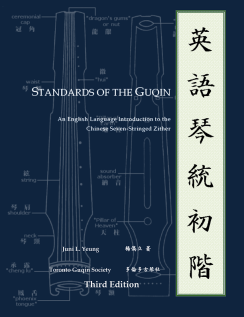Originally submitted to the Anthropology Department, University of Toronto for ANT322H1 (Anthropology of Youth Culture), taught by Dr. Marcel Danesi, on April 4, 2012.
The Counter-Culturing of Tradition: The Struggle of Representation in the Han Chinese Clothing Revival Movement
By: Juni L. Yeung, University of Toronto

HU Shen is a Gr.12 high school student in Lizhou High School in Yongkang, Zhejiang Province. She came to school dressed in Hanfu on March 18, 2012 to promote Chinese culture, but was sent home by the authorities in the afternoon, sparking nationwide criticism online.
An Alien on Home Turf
On the evening of March 19, a message titled “A time-travelling girl shockingly appeared in Lizhou High School” was posted on Sina Weibo (the Chinese equivalent of Twitter), along with a picture of HU Shen walking down a school hallway, clad in a short-Quju robe and skirt while holding in both hands typical breakfast – a glass of soy milk and a zongzi (steamed rice wrapped in lotus leaf). Described as “a typical quiet Gr.12 student, with good marks and behaviour” in a private-run Zhejiang Province high school, she acted cool and unfazed as classmates and faculty alike went ballistic in reaction to her clothes.
When a Zhejiang Daily reporter tried to contact her by noon, the school authorities replied that Hu has been “invited away to lunch by the faculty”, and 10 minutes later received a text message from Hu herself: “I’m already on route home, the teacher has driven me home to change my clothes, and for certain reasons I cannot speak with you. My apologies.” Hu then refused to receive calls all afternoon, except for one text message from another local newspaper reporter, where she said she was “advised not to return to school for the day; and scared being home alone, will wander in town and probably stay at a relative’s place for the night.”[1]
Various levels of authorities displayed signs of deniability on the subject. Some staff from the school commented to the media, “Perhaps the school couldn’t accept a student dressed like this all of a sudden, and we need to have more communication.” Another faculty was quoted, “If other students came in dressed like Shi Huangdi (the First Emperor of China), you’d think that’d be weird, too.” The Zhejiang Ministry of Education stated in response, “I have never heard of situations where students wear Hanfu to school before. While many schools have set rules to forbid students from wearing strange and outlandish clothing, whether Hanfu counts as such is still up for debate.[2]”
Chinese netizens responded with outrage to the authorities’ attitude on the matter. A commenter from Shaanxi wrote, “As a Han Chinese, why can’t they wear their own traditional Han clothing? The school is mentally deranged to do this to the girl!” Another from Jiangsu wrote, “Ethnic minorities can wear their own [traditional] costumes out, so why not the Han, as long as they’re not interfering other people.” A Fujian commenter lamented, “This is how Chinese culture gets extinguished.[3]”
Hu’s actions were hardly random or uncommon. Since 2006, Chinese netizens have taken to the streets dressed in self-made or independently-produced Han robes, its designs dating prior to the Manchu Qing invasion of China in 1644. Their mission was to remind and convince the Chinese public to question their own perceptions and values tradition from an authenticity perspective, but have often been responded to with various degrees of resistance, mockery, and violence. The roots of this antagonism against practicing tradition stretch back to over a century ago, but the casus belli of the people taking direct action against the mainstream took place at the crossroads of China’s recent modernization program. More





Recent Comments